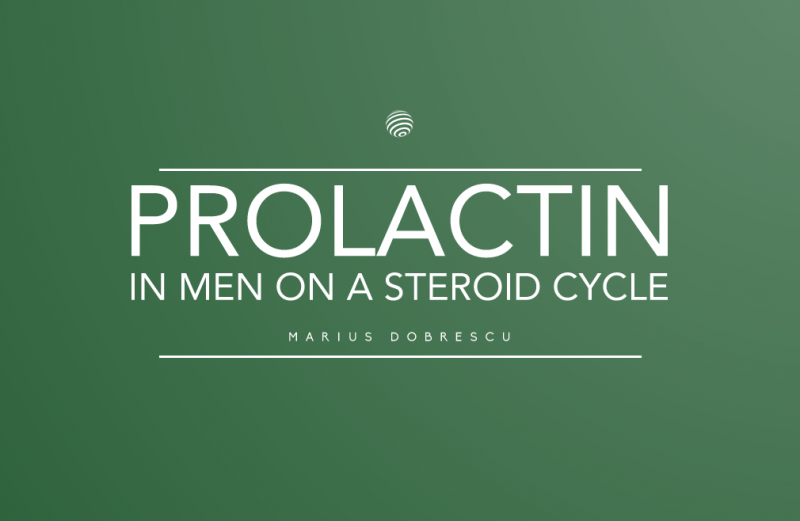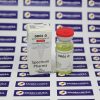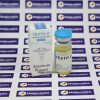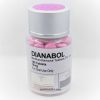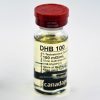Prolactin in Men
Prolactin is a hormone primarily associated with lactation in females, but it is also present and active in men. In men, prolactin is produced in the pituitary gland and has numerous functions including the regulation of the immune system, metabolism, and reproductive health.
The normal range for prolactin in men is typically between 2 to 18 ng/mL, but these values may vary depending on the laboratory and test used. Various factors can influence prolactin levels in men, such as stress, certain medications, and health conditions like hypothyroidism and pituitary disorders. Additionally, some anabolic steroids can elevate prolactin levels as a side effect.
Mechanism of Action
Prolactin interacts with receptors on the surface of cells throughout the body, triggering various physiological responses. In the reproductive system, prolactin helps regulate testosterone production and sperm development. Some research suggests that it also plays a role in sexual satisfaction.
Function and Negative Effects
Although prolactin is necessary for healthy bodily function, too much of it can lead to negative effects, a condition known as hyperprolactinemia. In men, elevated prolactin levels can cause symptoms like erectile dysfunction, decreased libido, infertility, and even galactorrhea (milk production). Furthermore, it’s common for men with high prolactin levels to experience a decrease in muscle mass and an increase in body fat.
Steroid Cycle and Prolactin
Certain anabolic steroids, particularly those derived from nandrolone and trenbolone, are known to increase prolactin levels in men. This happens because these steroids have progestogenic activity, which can stimulate the pituitary to secrete more prolactin.
While this effect might not be a major concern for someone using steroids for a short period, those on a long-term steroid cycle could potentially develop symptoms of hyperprolactinemia. This is particularly true if the steroid use is combined with other factors that increase prolactin, such as stress or certain medications.
High prolactin levels are not only a potential health concern but can also counteract the muscle-building effects that many seek from a steroid cycle. As a result, bodybuilders and athletes using these types of steroids often take steps to manage their prolactin levels.
How to Lower Prolactin Levels
If a man finds that his prolactin levels are too high, there are several strategies he can consider. Firstly, identifying and addressing the root cause is crucial. If steroid use is the primary contributor, adjusting the regimen or discontinuing use may be necessary.
Medical treatments are also available. Drugs known as dopamine agonists, such as cabergoline and bromocriptine, can be effective in lowering prolactin levels. These medications work by stimulating dopamine receptors in the pituitary gland, thereby inhibiting prolactin production.
Additionally, lifestyle changes can also make a difference. Regular exercise, a healthy diet, and adequate sleep can help regulate hormone levels, including prolactin.
It’s important for anyone concerned about their prolactin levels, particularly those on a steroid cycle, to consult with a healthcare provider. Regular blood tests can help monitor prolactin and other hormone levels to ensure they remain within a healthy range.
In conclusion, while prolactin plays a vital role in various bodily functions in men, an imbalance—especially in the context of steroid use—can lead to numerous health issues. Therefore, it’s crucial to carefully monitor and manage hormone levels during a steroid cycle.
Prolactin and Steroid Cycle: A Comprehensive Understanding
A comprehensive understanding of prolactin’s role in a steroid cycle requires appreciation for the interplay of hormonal systems. When anabolic steroids are introduced into the body, they don’t just affect muscle growth. They also interact with the endocrine system, which can lead to hormonal imbalances.
Steroid users must be aware of the potential side effects, including the potential for elevated prolactin levels. These levels need to be monitored closely, especially during a long-term steroid cycle. Those planning to use steroids for bodybuilding or athletic performance should discuss this with a healthcare provider. It’s crucial to regularly check hormone levels, including prolactin, to ensure that they stay within a safe and healthy range.
Another key point is the importance of managing lifestyle factors. Regular exercise, a balanced diet, and adequate sleep can all help to maintain a healthy hormonal balance. Even with the use of anabolic steroids, these fundamental health practices remain important.
Conclusion
Prolactin is a hormone that plays a vital role in various bodily functions in men, including reproductive health. However, its levels can be significantly affected by various factors, including the use of certain anabolic steroids. High prolactin levels in men, especially those on a long-term steroid cycle, can lead to health problems such as decreased libido, infertility, and changes in body composition.
Managing prolactin levels involves addressing the root cause, which may include adjusting or discontinuing steroid use, as well as lifestyle changes and medical treatments if necessary. This underscores the importance of a well-rounded approach to health and fitness that considers not just muscle growth, but overall hormonal balance.
Therefore, anyone considering a steroid cycle should approach it with a full understanding of the potential impacts on their endocrine system, and with a plan to manage those effects. Regular check-ups, blood tests, and consultations with healthcare providers are critical to ensuring that the benefits of a steroid cycle don’t come at the expense of overall health.
References:
-
“Prolactin: The Test.” (2019, February 26). Lab Tests Online. American Association for Clinical Chemistry (AACC). https://labtestsonline.org/tests/prolactin
-
Glezer, A., & Bronstein, M. D. (2012). Approach to the patient with hyperprolactinemia. The Journal of Clinical Endocrinology & Metabolism, 97(7), 2211-2220. https://doi.org/10.1210/jc.2012-1248
-
“Anabolic Steroids and the Male Reproductive System.” (2018, March 16). American Society for Reproductive Medicine (ASRM). https://www.asrm.org/globalassets/asrm/asrm-content/news-and-publications/news-and-research/press-releases-and-bulletins/pdf/anabolic_steroids_and_male_infertility_a_comprehensive_review.pdf
-
Mancini, T., Casanueva, F. F., & Giustina, A. (2008). Hyperprolactinemia and prolactinomas. Endocrinology and Metabolism Clinics, 37(1), 67-99. https://doi.org/10.1016/j.ecl.2007.10.013
-
Vallette-Kasic, S., Morange-Ramos, I., Selim, A., Gunz, G., Morange, S., Enjalbert, A., … & Jaquet, P. (2002). Macroprolactinemia revisited: a study on 106 patients. The Journal of Clinical Endocrinology & Metabolism, 87(2), 581-588. https://doi.org/10.1210/jcem.87.2.8189
-
“Understanding and managing the possible long-term risks of anabolic steroid use.” (2018, February). National Institute on Drug Abuse (NIDA). https://www.drugabuse.gov/publications/research-reports/steroids-other-appearance-performance-enhancing-drugs-apeds/why-do-people-misuse-apeds

